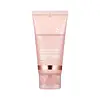What's inside
What's inside
 Key Ingredients
Key Ingredients

 Benefits
Benefits

 Concerns
Concerns

No concerns
 Ingredients Side-by-side
Ingredients Side-by-side

Water
Skin ConditioningGlycerin
HumectantButylene Glycol
Humectant1,2-Hexanediol
Skin ConditioningDipropylene Glycol
HumectantNiacinamide
SmoothingPropanediol
SolventTrehalose
HumectantPolysorbate 60
EmulsifyingGlycereth-25 PCA Isostearate
EmulsifyingAmmonium Acryloyldimethyltaurate/Vp Copolymer
Hydroxyethylcellulose
Emulsion StabilisingParfum
MaskingEthylhexylglycerin
Skin ConditioningAdenosine
Skin ConditioningDisodium EDTA
Hydrolyzed Collagen
EmollientSodium Hyaluronate
HumectantSoluble Collagen
HumectantHyaluronic Acid
HumectantDisodium Phosphate
BufferingDesamido Collagen
Skin ConditioningSodium Phosphate
BufferingHydrolyzed Hyaluronic Acid
HumectantPropionyl Collagen Amino Acids
Skin ConditioningCollagen Extract
Skin ConditioningWater, Glycerin, Butylene Glycol, 1,2-Hexanediol, Dipropylene Glycol, Niacinamide, Propanediol, Trehalose, Polysorbate 60, Glycereth-25 PCA Isostearate, Ammonium Acryloyldimethyltaurate/Vp Copolymer, Hydroxyethylcellulose, Parfum, Ethylhexylglycerin, Adenosine, Disodium EDTA, Hydrolyzed Collagen, Sodium Hyaluronate, Soluble Collagen, Hyaluronic Acid, Disodium Phosphate, Desamido Collagen, Sodium Phosphate, Hydrolyzed Hyaluronic Acid, Propionyl Collagen Amino Acids, Collagen Extract
Water
Skin ConditioningPolyvinyl Alcohol
Glycerin
HumectantAgave Americana Stem Extract
Skin ConditioningSodium Hyaluronate
Humectant1,2-Hexanediol
Skin ConditioningCaprylyl Glycol
EmollientPolyglyceryl-10 Laurate
Skin ConditioningChlorella Vulgaris Extract
Skin ConditioningGlucose
HumectantButylene Glycol
HumectantEthylhexylglycerin
Skin ConditioningFructooligosaccharides
HumectantFructose
HumectantXanthan Gum
EmulsifyingCynanchum Atratum Extract
Skin ConditioningCaprylic/Capric Triglyceride
MaskingHydrogenated Lecithin
EmulsifyingAlthaea Rosea Flower Extract
Skin ConditioningCeramide NP
Skin ConditioningTocopherol
AntioxidantPancratium Maritimum Extract
BleachingCollagen Extract
Skin ConditioningSodium Stearoyl Glutamate
CleansingWater, Polyvinyl Alcohol, Glycerin, Agave Americana Stem Extract, Sodium Hyaluronate, 1,2-Hexanediol, Caprylyl Glycol, Polyglyceryl-10 Laurate, Chlorella Vulgaris Extract, Glucose, Butylene Glycol, Ethylhexylglycerin, Fructooligosaccharides, Fructose, Xanthan Gum, Cynanchum Atratum Extract, Caprylic/Capric Triglyceride, Hydrogenated Lecithin, Althaea Rosea Flower Extract, Ceramide NP, Tocopherol, Pancratium Maritimum Extract, Collagen Extract, Sodium Stearoyl Glutamate
 Reviews
Reviews

Ingredients Explained
These ingredients are found in both products.
Ingredients higher up in an ingredient list are typically present in a larger amount.
1,2-Hexanediol is a synthetic liquid and another multi-functional powerhouse.
It is a:
- Humectant, drawing moisture into the skin
- Emollient, helping to soften skin
- Solvent, dispersing and stabilizing formulas
- Preservative booster, enhancing the antimicrobial activity of other preservatives
Butylene Glycol (or BG) is used within cosmetic products for a few different reasons:
Overall, Butylene Glycol is a safe and well-rounded ingredient that works well with other ingredients.
Though this ingredient works well with most skin types, some people with sensitive skin may experience a reaction such as allergic rashes, closed comedones, or itchiness.
Learn more about Butylene GlycolCollagen extract is derived from parts of animals. It has skin conditioning properties and is mostly comprised of glycine, proline, and hydroxypoline. These are amino acids.
While our skin does have collagen, this ingredient is not used by the skin for anti-aging. Applying collagen topically has not been linked to helping with collagen loss in skin. All the benefits of collagen are related to hydration.
This ingredient will not increase sun sensitivity, but you should always wear sunscreen during the day.
Learn more about Collagen ExtractEthylhexylglycerin (we can't pronounce this either) is commonly used as a preservative and skin softener. It is derived from glyceryl.
You might see Ethylhexylglycerin often paired with other preservatives such as phenoxyethanol. Ethylhexylglycerin has been found to increase the effectiveness of these other preservatives.
Glycerin is already naturally found in your skin. It helps moisturize and protect your skin.
A study from 2016 found glycerin to be more effective as a humectant than AHAs and hyaluronic acid.
As a humectant, it helps the skin stay hydrated by pulling moisture to your skin. The low molecular weight of glycerin allows it to pull moisture into the deeper layers of your skin.
Hydrated skin improves your skin barrier; Your skin barrier helps protect against irritants and bacteria.
Glycerin has also been found to have antimicrobial and antiviral properties. Due to these properties, glycerin is often used in wound and burn treatments.
In cosmetics, glycerin is usually derived from plants such as soybean or palm. However, it can also be sourced from animals, such as tallow or animal fat.
This ingredient is organic, colorless, odorless, and non-toxic.
Glycerin is the name for this ingredient in American English. British English uses Glycerol/Glycerine.
Learn more about GlycerinSodium Hyaluronate is hyaluronic acid's salt form. It is commonly derived from the sodium salt of hyaluronic acid.
Like hyaluronic acid, it is great at holding water and acts as a humectant. This makes it a great skin hydrating ingredient.
Sodium Hyaluronate is naturally occurring in our bodies and is mostly found in eye fluid and joints.
These are some other common types of Hyaluronic Acid:
Learn more about Sodium HyaluronateWater. It's the most common cosmetic ingredient of all. You'll usually see it at the top of ingredient lists, meaning that it makes up the largest part of the product.
So why is it so popular? Water most often acts as a solvent - this means that it helps dissolve other ingredients into the formulation.
You'll also recognize water as that liquid we all need to stay alive. If you see this, drink a glass of water. Stay hydrated!
Learn more about Water